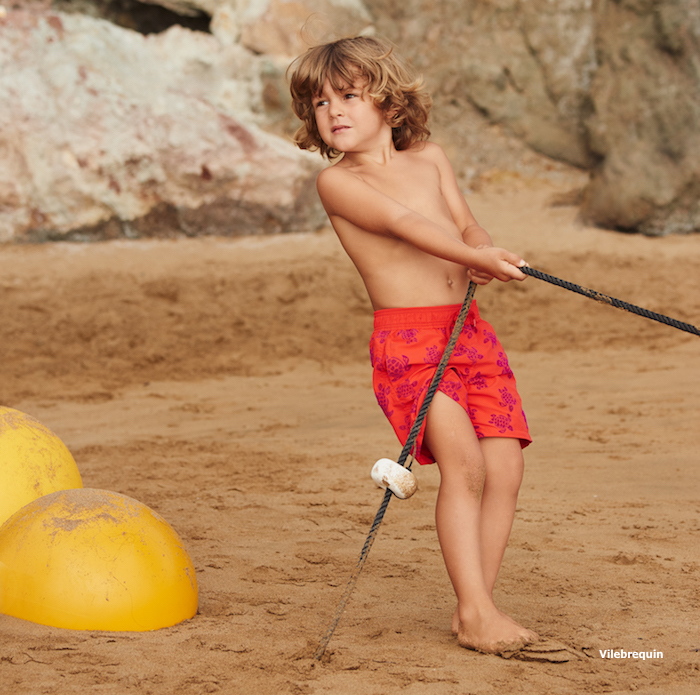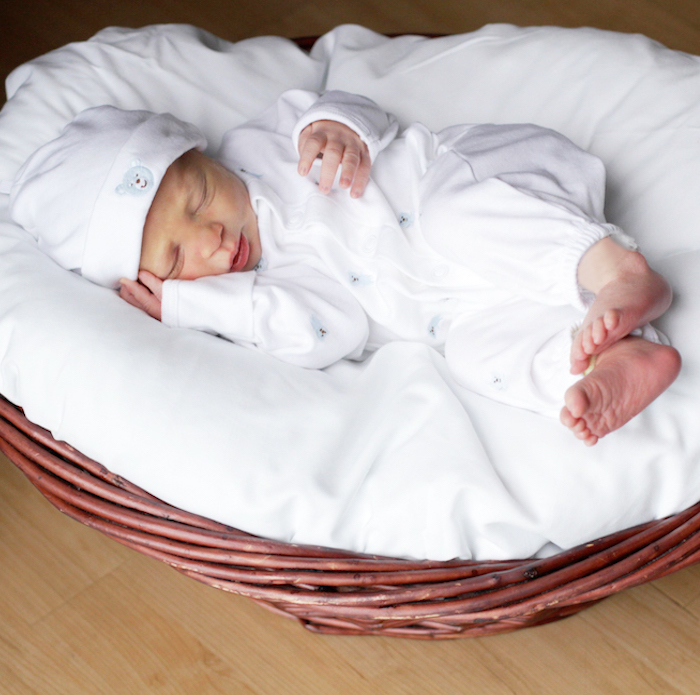Health & Fitness
Fun in the Sun
A Guide to Beach Safety for Kids
By Mirna Abouzeid
May 26, 2018
It's summertime and there is nothing more kids love to do than spend a day at the beach! Splashing around in the water and lazing under the sun is a summer pastime that can't be beat! As the beach season kicks off, we parents may need some reminders and tips that can help us keep our kids safe and avoid the threats of one of nature's most glorious and loved landscapes.
No solo swims
If your child enjoys going for a swim rather than just splashing around in the water, make sure they do not go alone—even if there is a lifeguard on watch. S/he may get a cramp or get caught by a strong current. It's always safer to swim with a friend or sibling so that in case of danger or an emergency there is someone to call out for help and assist the other. Remember, safety is in numbers!
Check the currents
Before you give your child the okay to go for a swim, take a look at the sea. If it looks too rough, it probably is. Suggest that s/he swim along the shoreline instead. Otherwise, be specific as to how far out you want him/her to swim before turning back. This way, your child is always close to shore in case they get tired and need a break, and you can keep your eyes on them. No matter how confident you are in your child's swimming abilities, strong waves pose a threat. Also, remind your child to never turn their back to the ocean; when taken by surprise, even the smallest wave can knock them over and cause injury.
Build their self-confidence
If your child is not a confident swimmer or just not that confident in the water, don't leave him/her. Go into the water with them and help him/her get used to their range of movement and motion in the water before you leave them alone. This is especially important on your first few visits to the beach for the season, when your child may need to re-establish his/her comfort zone in the water. Also, wearing a life jacket or floaty is extremely important and can help your child in feeling more secure.
Avoid blow-ups
Floating around on a blow-up tire is better kept for the pools. The beach is not the ideal place as children may be dumped by waves or carried out further than they are able to swim back. This is especially true if they are not paying attention, which is not difficult—everyone loses track of time and place when lazing around on a floaty in the middle of the ocean.
Clothing
When not in the water, make sure your child is wearing a hat and sunscreen, as well as a loose t-shirt thick enough to block the sun's rays. Sheer fabrics are of no function when it comes to sun protection. Sunscreen must be reapplied every few hours and seeking shade as much as possible between those very hot hours of 11am and 2pm is preferable. This means under an umbrella with a hat and sunscreen on. A broad brim hat rather than a cap offers more protection as it covers the face, the ears and the back of the neck. Don't forget the sunglasses, which protect the sensitive skin around the eyes and may reduce the long-term risk of developing cataracts. Look for sunglasses that offer at least 99 percent UV protection for children.
Footwear
Flip-flops are a must. The sand can get very hot, hot enough to burn your little one's feet, so get them in the habit of wearing flip-flops. They will also protect them from stepping on broken glass, sharp stones, and other avoidable materials. If the beach you visit is a rocky one, be sure to get some beach shoes to avoid slipping and sliding on the rocks under water, which can be extremely dangerous.
In the event of sunburn
Start off by giving your child a cool bath to cool down if they are sunburned over most of their body. If they only have sunburn in one spot, apply a wet cloth to the burnt area. Don't add any sort of shower gel or soap to the bath water as it can irritate the burnt skin. Apply sunburn lotion before they go outside again, and reapply regularly. 80 to 90 percent aloe vera gels are great; when applied early, they help to lessen the pain and prevent burns from deepening. If you do notice watery blisters on the skin, your child should see a doctor.
Of course, the best treatment is avoidance and the best way to avoid your child getting sunburnt is to liberally apply a broad-spectrum, water-resistant sunscreen (at least SPF 30) about 20 minutes before they are exposed to the sun. Sunscreen should be applied on all exposed skin including tops of the ears and the back of the neck, as well as under sheer clothes; if you can see your hand through the material, the sun's rays can get through it too. For teenage children prone to pimples and acne, it's better to apply a gel or lotion-based sunscreen rather than a cream-based one because they are less oily. Remember that if your child has fair skin and light eyes, they have less melanin than a child with dark eyes and skin. Melanin is a chemical in the skin that protects it from sun damage. Thus, your child will get sunburn faster so you need to pay extra special attention.
According to the Skin Cancer Foundation, getting one blistering sunburn when you're a child doubles your chances of developing melanoma.
Drink up
If your child comes to you thirsty, s/he is already mildly dehydrated. Seeing as how kids don’t remember to drink water if they’re not thirsty, it's up to you to keep passing them a bottle of water every 20 minutes to keep them well hydrated. Juice, sodas and other sugary drinks do not count! They need water. As kids are enjoying themselves at the beach, they are expending energy and sweating. The more they sweat under the hot sun, the more water their bodies are losing and thus the more water they need to drink.
Water is essential for their bodies to function properly. As parents, you need to bear in mind that kids are more susceptible to heat illnesses than adults because their central nervous system is not yet fully developed. So do not make the mistake of comparing your ability to adapt to and deal with being under the sun for a few hours to your child's ability. Being active at the beach, especially during those hours the sun is at its hottest, and not drinking enough water make it difficult for young bodies to regulate changes in their body temperature, thus causing heat illness and dehydration.
Symptoms of heat exhaustion
These may include feeling thirsty, tired and weak as well as cramping in the legs or abdomen. Kids get heat exhaustion when their bodies can't cool themselves fast enough. If left untreated, heat exhaustion can progress to the more serious heatstroke, symptoms of which include any of: dizziness, trouble breathing, headaches, rapid heartbeat, nausea, vomiting, confusion and changes in blood pressure. Skin may be flushed and feel hot and dry (not sweaty). If you suspect your child is showing signs of heat illness, have them lie down in a cool place and elevate their legs. Give them plenty of water, and use wet towels to cool them down.




























